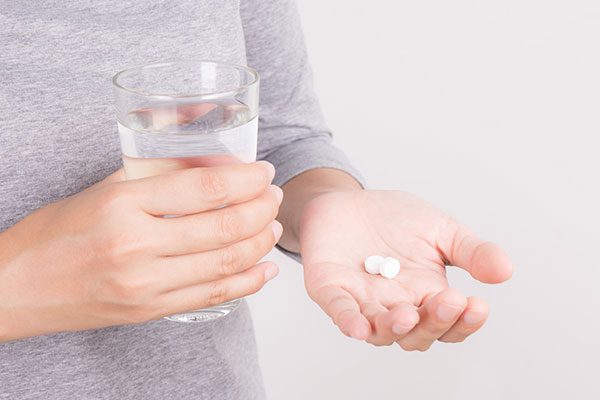Post-Op Instructions for Tooth/Wisdom Teeth Extractions
 Bleeding, bruising and swelling are NORMAL EVENTS in the healing process and ARE TO BE EXPECTED following surgery. Bleeding typically subsides within 24 hours after your procedure and is typically well controlled by biting forcefully on a piece of gauze over your surgical site. Gauze should be changed every 30-40 minutes until bleeding stops and should be removed for meals and while sleeping. Bruising may occur several days after the procedure and will resolve within 7-14 days. Swelling is a natural component of the healing process and typically peaks at 72-96 hours after surgery. Swelling can be decreased by the use of ice packs, Ibuprofen and limiting your physical activity for the first week after your procedure. As your swelling increases, you may develop limited jaw opening. This is typically an effect of swelling and will resolve with time. If limited opening persists after your swelling subsides, please contact our office.
Bleeding, bruising and swelling are NORMAL EVENTS in the healing process and ARE TO BE EXPECTED following surgery. Bleeding typically subsides within 24 hours after your procedure and is typically well controlled by biting forcefully on a piece of gauze over your surgical site. Gauze should be changed every 30-40 minutes until bleeding stops and should be removed for meals and while sleeping. Bruising may occur several days after the procedure and will resolve within 7-14 days. Swelling is a natural component of the healing process and typically peaks at 72-96 hours after surgery. Swelling can be decreased by the use of ice packs, Ibuprofen and limiting your physical activity for the first week after your procedure. As your swelling increases, you may develop limited jaw opening. This is typically an effect of swelling and will resolve with time. If limited opening persists after your swelling subsides, please contact our office.
Nausea and vomiting may occur after surgery. It is most frequently associated with taking pain medication on an empty stomach. If nausea and vomiting occur, please discontinue your prescribed pain medication and take Ibuprofen/Naproxen (Advil, Motrin, Aleve) or Tylenol for your pain control. If the nausea continues, please call our office for further instructions.
Please do not worry about sutures (stitches). Sutures may have been placed to close very small incisions within your mouth. Sutures typically dissolve between 2-10 days depending on the type of suture placed. If a suture loosens or comes out, there is no need to panic as the surgical site will heal fine.
Antibiotics may be prescribed depending on the procedure performed. Antibiotics should be discontinued immediately and our office contacted should a rash occur after the administration of antibiotics. Should any life-threatening swelling develop after the administration of antibiotics, proceed directly to the hospital. Note that antibiotics may interfere with the effectiveness of oral contraceptives (birth control).
Please take unused prescribed pain medications from your procedure to your pharmacy in a timely manner for proper disposal.
The Day of Surgery
- Some degree of discomfort and pain is expected after your numbness subsides. If you are an adult patient, at the first sign of pain or discomfort, you may take 600-800 mg of Ibuprofen (Advil, Motrin) unless prohibited by your physician. Pediatric patients should take age and weight appropriate Ibuprofen as described on the children’s Ibuprofen package. If you cannot take Ibuprofen/Aspirin products, you may substitute Tylenol for Ibuprofen. If you are still uncomfortable after taking Ibuprofen, you may take the prescribed pain medication. Please ensure to take the prescribed pain medication and antibiotics (if prescribed) as directed and with food and water. As pain medication and antibiotics may cause nausea and vomiting, it is very important to not take them on an empty stomach. Do NOT take pain medications with alcohol or other sedatives.
- TO REPEAT: Please take Ibuprofen once your numbness wears off and please take your prescribed pain medication ONLY if needed and after eating a small meal.
- Do not disturb the area of surgery. Avoid straws, rigorous chewing, spitting and rinsing that could delay healing, restart bleeding and loosen a suture if one was placed.
- Minor bleeding or oozing from your procedure site is normal. Light bleeding or oozing may continue throughout the day of your surgery. For the first 2-3 hours after your surgery, please keep firm pressure on the surgical site (s) by biting down firmly on gauze. The gauze should be folded and placed directly over your extraction site (s) and firm pressure should be applied for 30 minute intervals by biting on the gauze. Replacing the gauze every few minutes WILL NOT place sufficient pressure on the site to stop or slow bleeding. If heavy bleeding persists that is not slowed with biting on gauze, please call our office for further instructions.
- TO REPEAT: In most instances, biting firmly on gauze placed directly over the extraction site (s) for a period on 30 minutes will stop bleeding.
- Adequate nutrition is essential for healing. We encourage you to eat a small meal as soon as possible after your procedure. Please remove your gauze, eat a soft meal (soup, yogurt, smoothie, shakes, mashed potatoes, pasta, macaroni and cheese, grilled cheese sandwich, oatmeal, toast, pancakes, eggs, soft donut, etc.) and then replace your gauze over your extraction site and bite down with firm pressure.
- Fluid intake is important after your procedure. PLEASE AVOID USING STRAWS FOR THE FIRST 7 DAYS AFTER YOUR PROCEDURE. Using a straw may dislodge a blood clot and could stimulate a dry socket.
- LIMIT PHYSICAL ACTIVITY FOR THE NEXT 7 DAYS. Overexertion may lead to increased pain, bleeding and swelling to the surgical site
- Please refrain from drinking alcoholic beverages during your post-operative period and while taking the prescribed pain medication.
- Please take all of your regularly scheduled medications (diabetes, high blood pressure, etc.) at their normal time and dose after your procedure unless specifically directed otherwise.
- If your procedure was performed with IV sedation (general anesthesia) or with oral sedation, please do not drive an automobile for 24 hours after your procedure.
- AVOID SMOKING (cigarette, cigar, vaping) AFTER YOUR PROCEDURE. Smoking will essentially increase all post-op complications associated with oral procedures. Smoking promotes increased pain, dry socket formation, infection, graft and implant failure, communications between your oral cavity and overlying sinuses and delayed healing.
The Day Following Surgery
- On the morning after your procedure, please begin brushing your teeth as you normally would. Please avoid brushing the surgical site as it may stimulate bleeding or premature suture loss.
- Please begin salt water rinses. Add ½ teaspoon of salt to a large glass of warm water and carefully rinse your mouth. Please repeat 3-4 times a day until complete healing of your tissues. Please AVOID the use of hydrogen peroxide, Water Picks and syringe irrigations as they may dislodge developing blood clots and lead to delayed healing and dry socket formation.
Day #3 After Your Surgery and Thereafter
- Peak pain and swelling typically occurs on post-operative day #3 or 4.
- Please continue to apply ice to your face in the generalized area of your procedure for the first 3 days after surgery in order to limit swelling of the surgical site.
- If your procedure was the removal of wisdom teeth and if you were given an irrigation syringe, PLEASE BEGIN SYRINGE RINSES WITH SALT WATER ON DAY #3 AFTER YOUR WISDOM TEETH EXTRACTION PROCEDURE. Please rinse your mouth with salt water and draw up the additional salt water into your irrigation syringe. Irrigate one syringe per lower wisdom tooth extraction site. Do not irrigate upper wisdom tooth extraction sites. Please repeat after each meal until total tissue coverage over your extraction sites. Total tissue coverage typically takes between 10-14 days to heal depending on the degree of impaction of the wisdom teeth. Please DO NOT rinse with anything other than salt water. If food debris is not removed from your extraction sites, it can lead to pain, swelling and infection at the site.
- On post-operative day #4, please begin to advance your diet from a soft diet to your normal diet. Please continue to avoid straws, smoking and extremely hard foods such as nuts, hard candy, peanut brittle, etc.
Sinus Instructions
If your extractions were within your upper jaw, please follow the instructions below:
- Do not blow your nose
- Try to not sneeze. If you must sneeze, please do so with your mouth open in order to minimize the pressure on the sinus areas.
- Avoid smoking and using a straw
- Do not lift or pull your lip to look at stitches as this may tear or loosen sutures
- Please take all of your prescribed antibiotics as directed
- You may (rare) have some minor bleeding from your nose for the first 24-28 hours
- If you feel congested, you may use antihistamines or decongestants. Please avoid nasal sprays unless they are saline.
What are dry sockets?
Dry sockets are the number one most common post-operative issue that patients face following wisdom tooth extraction. They are believed to occur as a result of premature blood clot loss to the wisdom tooth extraction site. Dry sockets typically affect one if every five patients and are more common in smokers, older patients and wisdom teeth that are severely impacted.
Dry sockets typically occur within the lower jaw and usually only after the 4th or 5th day after wisdom teeth are extracted. Dry sockets are not an infection and typically present with an increased deep, dull and throbbing pain that can occasionally radiate to the ear. Should a dry socket occur, they can be treated by placing a medicated packing within the extraction site to decrease pain and discomfort. The sole purpose of the medicated packing is to decrease pain. If a medicated packing is not placed, the area will still heal. If a packing is placed, it must be removed after 2-4 days.
What can I do to decrease my chances of developing a dry socket?
- Follow all post-op instructions given by our office
- Avoid smoking
- Avoid the use of straws
- Begin salt water rinses the day after your procedure
- If you were given an irrigation syringe following your procedure, please begin to irrigate the site with salt water on post-operative day #3. DO NOT irrigate the site if a bone graft was placed as this will remove the bone graft material and delay the healing of the site.


